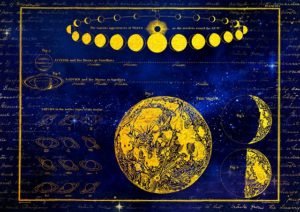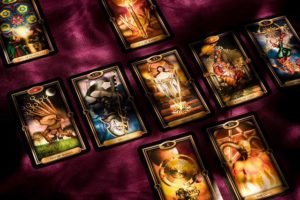- The Alchemical Themes
- Methods Of Experimentation In Alchemy
- Material Substances Relations In Alchemy
- Religious Aims Under Alchemy
- The Alchemy Criticism
The Modern Alchemist: What is it, how does it work, and why does the public still need to be aware of this ancient practice? This article will discuss the alchemical themes, experimentation techniques, and material substances of the modern alchemist’s practice. It will also discuss the religious aims of alchemy. Here, we’ll cover how to recognize an alchemist who has achieved this higher state of consciousness.
The Alchemical Themes
The themes of alchemy can be found in various literary works, including the pseudonymous De secretis naturae by Arnald of Villanova. This work, which is a dialogue between a master and his apprentice, places alchemy within the framework of Aristotelian natural philosophy. It also distinguishes alchemical learning from the apprenticeship of an artisan. Reading alchemically means reading philosophically and approaching texts on many levels.
Throughout the history of the alchemical tradition, it was common for materials to undergo transformations in the laboratory. Although the goal was largely spiritual, the literature contains both symbolic and practical concepts. For example, the alchemical process of changing mercury into gold was described in elaborate metaphors. In a popular alchemical allegory, sulphur and mercury became one, with gold representing the King and the silver the Moon. The unification of these two elements was the subject of alchemical illustration and commentary.
In alchemical paintings, celestial globes are commonly depicted. The Alchemists would use these maps to plan major events and to diagnose patients. The alchemists would also use the charts and maps to trace the origin of illnesses. Alchemical paintings often display the evidence of medicinal and metallurgical practices. This is a time-honored tradition with many connotations. However, today’s alchemists focus on the practice of alchemical themes.
Methods Of Experimentation In Alchemy

Alchemy is a philosophical and spiritual practice that uses scientific and experimental methods to transform substances. During its early years, the practice of alchemy was found in Mesopotamia, Ancient Egypt, Persia, India, and classical Greece. It was practiced in Europe as late as the 19th century. Today, alchemy still has a profound influence on our modern society.
As scientific knowledge and techniques grew, alchemists sought to apply theories from other disciplines to their own practices. In the process, they struggled to explain how the chemical elements worked. They also wanted to understand the principles underlying these substances. This process was incredibly complex, and alchemists sought to find order and meaning in their experiments. In many ways, alchemy and modern chemistry have a lot in common.
Alchemy has influenced modern science. The 16th century alchemist Paracelsus was a physician, metallurgist, and prophet. His work as an alchemist led him to become the first modern toxicologist, recognizing a correlation between dose and toxicity. Small doses of the substances used in alchemy were helpful to humans, while large ones were lethal. The discovery of this relationship paved the way for modern clinical medicine.
Alchemists were primarily men. They exhibited a willingness to experiment with various disciplines. They used various methods of chemical reactions, changing the properties of metals and alloys. Although there were no formal alchemy universities, the knowledge they did acquire was passed down through apprenticeship. In addition, alchemists used obscure symbols and codes to preserve their knowledge. Unlike scientists today, alchemists did not attend alchemy universities. Instead, they passed their knowledge to apprentices, and often wrote in obscure symbols and codes.
Material Substances Relations In Alchemy

The ancient art of alchemy used a combination of physical and spiritual processes to convert matter into gold and silver. The goal of alchemy was to create something new by combining desired materials and foreign biological substances. Today’s modern alchemist practice material substances in a practical way to help the body and mind heal. Using a combination of techniques, alchemists can turn negative situations into opportunities for growth.
While some alchemists were charlatans and posers, most were scientists, scholars, and artists who sought to understand and manipulate the physical properties of chemical substances. This practice has many parallels with the work of modern chemists, who use rules of thumb and experimentation to understand chemical reactions. In particular, a modern alchemist can apply the same principles to improve the way he creates pharmaceuticals.
A Modern Alchemist practices the transmutation of material substances using chemical reactions. Alchemists use liquid mercury and various elements to transmute other substances into other substances. Many manuals from the 1300s explain the principles of alchemy. Thousands of manuals have been published and can be found online. Modern alchemists practice material substances by combining a variety of elements and minerals. They use their knowledge of how to transmute base metal into gold.
One of the most crucial elements of alchemy was sulfur. Sulfur is a substance that dissociates into two corrosive substances, ammonia and hydrochloric acid. The corrosive properties of sulfur are a major reason why alchemists used it. This material comes from a place called the Flame Mountain in Central Asia. So, how does it relate to the science of alchemy?
Religious Aims Under Alchemy

While most modern readers of alchemy will only see the process as a mystical method of chemistry, this view has been changed with the development of subatomic physics and nuclear fission. These developments made it possible to transmute elements and create powerful atomic bombs and power stations. Although modern alchemists are still active, they are not performing experiments as they once did. This is a significant change.
In the fourth century, the alchemical tradition received its embryonic form in Byzantium. Byzantium’s culture was influenced by Egyptian tradition, which was filtered through Alexandrian Hellenic sources. The Egyptian alchemist Hermes Trismegistus is attributed to having first discovered alchemical art. His works are cited as evidence for its existence. Despite the influence of these sources, some scholars question whether Alchemy was a religious art.
However, alchemy’s roots go back much further. In the Middle Ages, it was closely linked with the astrology of the Babylonian-Greek school. Some alchemists, such as Lucretius, considered each metal to be related to a particular planet. This is why Kabbalah and alchemy are often linked, even though they have different aims and symbol systems.
The first European alchemists practiced the art of making gold. They used mercury to create gold. Afterward, the practice spread to the Islamic world. Islamic alchemy has more historical documentation than its European counterpart. Most of its early writings were preserved in Islamic translations. In the sixteenth century, the practice reached its height, at the same time as the Christian persecution of pagans. Zosimus of Panapolis, a self-appointed apologist, argued that alchemy had religious purposes.
The Alchemy Theories
Throughout history, alchemists have sought to reconcile the physical aspects of their work with their metaphysical interpretations. The lack of common words in early alchemy has led to a proliferation of esoteric symbols and mythological terms. They have borrowed terminology from astrology, kabbalah, and other mystic fields. This has resulted in what appear to be a relatively simple chemical recipe becoming an abstruse magic incantation.
Many alchemists have viewed the metaphysical aspects of alchemy as the real foundation of the practice. According to these interpretations, material objects and physical states represent metaphors for spiritual entities. The transmutation of common metals into gold symbolizes the evolution from a corruptible to a perfect state, and the philosopher’s stone is a hidden spiritual truth. In this interpretation, a combination of all four elements, a common element, and a universal panacea represents the metaphysical aspect of alchemy.
While the alchemists’ goal was to transform ordinary materials into gold, they also searched for a potent, mystical substance that could cure all diseases and extend life indefinitely. The pursuit of this object brought European alchemists much attention and resources. Some of their works were written down in hundreds of manuals dating back to the 1300s. And many of them used the morning dew to experiment with materials, such as sulfur and iron.
The Alchemy Criticism

Critics of alchemy have been trying to derail the enduring appeal of the alchemical tradition by claiming that it is merely an ancient art that is no longer relevant. Although some alchemists were mere posers, most were highly educated and distinguished scientists such as Isaac Newton and Robert Boyle. As scientists, they studied chemical substances through experimentation, traditional know-how, rules of thumb, and speculative thought. But the controversy over alchemical practice has made it all the more important to examine the process.
Critics claim that early modern alchemical literature was difficult to understand, and that it was similar to the writings of poststructural theorists. These alchemists used mythological symbols and code words to disguise trivial points and undermine the value of gold. The 18th century also saw the disappearance of alchemist practitioners. But some have argued that chemistry and physics gave rise to a modern alchemist practice.
The 16th century saw the rise of chemistry and the birth of the modern science of chemistry. While many historians of science view alchemy as a fraud, some claim that alchemists made a lot of discoveries that later became possible through modern chemistry. Indeed, alchemists are responsible for some of the first pharmaceuticals, and modern chemists haven’t yet arrived at the true goals of alchemy.
Alchemist Of The Modern Time











Can I simply say what a comfort to find someone who actually understands what they are discussing on the net. You definitely understand how to bring an issue to light and make it important. More people should check this out and understand this side of the story. I was surprised that you are not more popular since you most certainly have the gift.